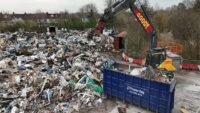Home security is an essential consideration for any homeowner. So, a legionella risk assessment is one way to ensure your home is secure. Legionella bacteria can cause serious health complications, so it’s essential to assess the risks associated with this potential danger regularly. In this article, we will discuss how to conduct a legionella risk assessment to secure your home from the potential of contamination.
Identifying Problem Areas
By conducting a thorough risk assessment of your building’s water systems, you can identify any areas where legionella may be present and take the necessary steps to eliminate it. The evaluation will typically involve the following:
- Reviewing the design and construction of your water systems.
- Analyzing your current maintenance practices.
- Testing for the presence of legionella bacteria itself.
The information gathered during the assessment can then be used to develop a comprehensive strategy for managing legionella risks. This may include implementing regular monitoring procedures or updating existing maintenance protocols to better target areas where the bacteria may be present.
Developing A Treatment Plan
Several essential steps must be taken when developing a treatment plan for legionella risk assessment. The first step is to assess the water system to determine if any areas may be at risk for legionella growth. Once the evaluation has been completed, the next step is to create a comprehensive treatment plan that addresses all identified threats. This may include implementing measures such as regular cleaning and disinfection of water systems, installing filtration systems, or adjusting temperature settings to minimize the risk of bacterial growth. Finally, ongoing monitoring and testing are critical components of any effective legionella risk management program.
Working With Professionals
As a business owner or property manager, you have a lot to consider when maintaining your facilities. To keep your employees and customers safe from this potentially deadly illness, working with professionals experienced in Legionella risk assessment is essential. This assessment can involve testing water samples, analyzing ventilation systems, and examining other factors that could contribute to bacterial growth. By working with professionals who specialize in this area, you can ensure that all potential risks are identified and addressed before they become a problem.
Prevention And Maintenance
Prevention and maintenance are two key components in reducing the risk of legionella outbreaks. One crucial step towards prevention is a legionella risk assessment. This entails testing for the presence of legionella in the facility’s water system and identifying any potential sources of contamination. Once identified, these sources can be eliminated or treated to reduce the risk of an outbreak occurring. Regular maintenance is also essential for preventing legionella growth. Water systems should be regularly cleaned and disinfected to ensure that they remain free from contaminants.
Conclusion
This assessment can identify potential risks and provide an action plan to ensure your home is safe. If done correctly, a legionella risk assessment will protect you and your family from the dangers of this disease. Additionally, it can help homeowners to save money on costly repairs and replacements due to potential water damage.




